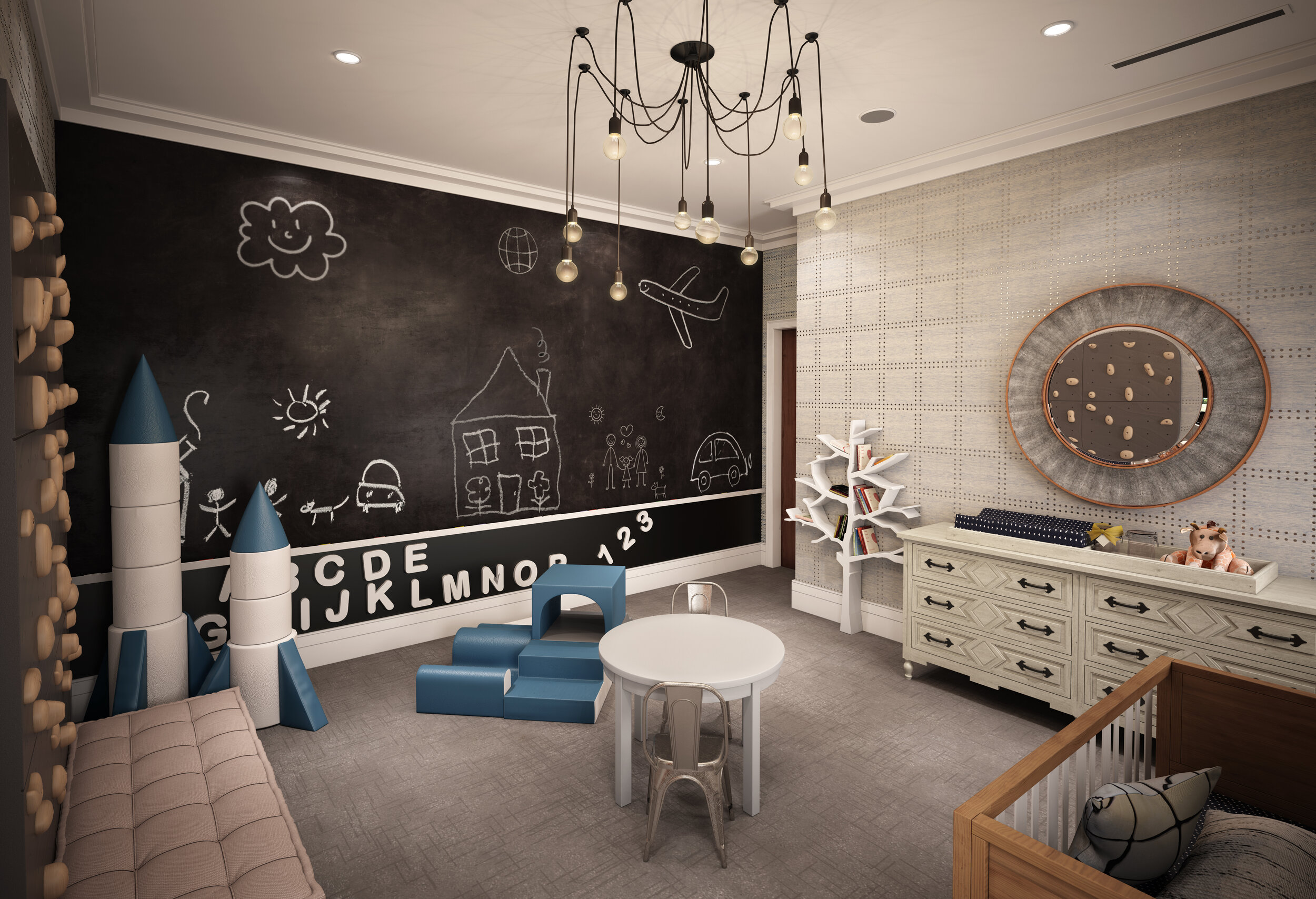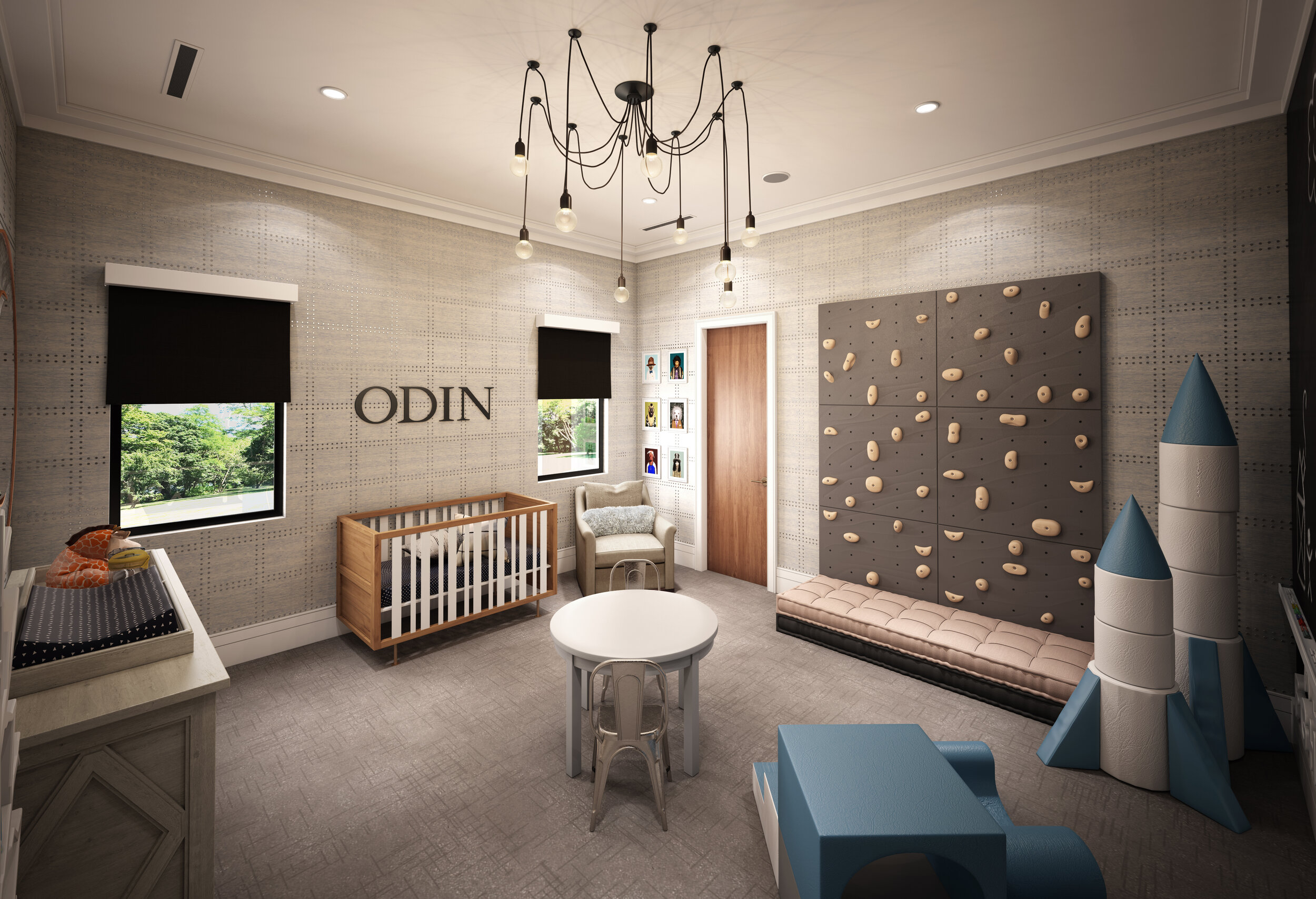How to Design Your Child’s Room for Sensory Play
From Odins Room
Did you know that sensory play is important for the long-term wellness and brain development of your little one? It’s true. Sensory play activates your babe’s senses… and when our senses are activated and engaged, that’s when memories are made!
Other benefits of sensory play include calming an anxious child, developing his or her problem-solving skills, and even creating fine and gross motor skills. Who knew, right?
If sensory play sounds dangerous or messy, it doesn’t have to be. Part of designing for little ones means creating an environment that is safe for Baby and easy on you.
Together, we can inspire your little one to use all five senses. The best part is, you can incorporate sensory play into the design. A conscious and functional space accommodates the mess and hides all the materials when it’s all over — yes, storage is essential! — so your lovely home doesn’t look like a preschool classroom.
Keep in mind that every child is unique and has their own individual needs. Observing, recognizing and acknowledging their specific needs can help guide you in the design process.
Here are a few ways you can engage your child’s five senses and have a functional and beautiful design…
The Sense of Touch
Your little one experiences so much of the world around them by touching… everything! Provide them with plenty of opportunities to explore, from textural costumes to water tables. Mixed mediums help them make those brain connections. Not only can sensory specific items be a catalyst to the sense of touch, the decor materials can be selected during the design process with this sensory concept in mind.
By using textured fabrics such as boucle or velvet for your upholstered items and pillows, you’ll get the opportunity to say, “feel how bumpy this is” - encouraging your child to touch and explore. Use the same thought process when selecting other textural items such as rugs and wallpaper.
Another great way kids love to explore their sense of touch is by pretending to cook in a play kitchen. Ditch those clunky plastic kitchens and pretend food. Purchase kitchens made with natural textures, such as wood in water-based, child-safe finishes to keep toxins out of your toddler’s playroom. (You can read more about some of my favorite top 5 non-toxic brands for children’s spaces here.) Try pretend food made of felt along with woven baskets for a tactile experience.
Integrate another developmental and therapeutic experience with sensory wall panels. The panels can feature tactile, auditory and visual sensory activities.
I adore this bobbin table from Three Pears
The Sense of Smell
Did you know our sense of smell is the strongest memory inducer? The right scents can relax or excite us! Creating experiences for your children to explore this sense of smell might sound intimidating, but I’ve got you covered with these easy DIY ideas...
Try making homemade scented playdough. You can add scents with diluted essential oils, creating a calming and comforting experience. You can even color the playdough with natural ingredients like blueberries, raspberries, or turmeric. Just be mindful of your child’s age and supervision needs.
Have older children? A room with real plants or flowers is a great way to incorporate their nurturing side when tending to them.
Another idea is playing a matching game using DIY Montessori smelling bottles. Use ingredients like essential oils, spices, and vanilla to make two bottles of each scent. Have your little one smell each bottle and then find the matching bottles.
Pro Tip: Label the scents on the bottom of the bottle so you can quickly check them!
Sense of Taste
Sensory activities often activate more than one sense, and many taste activities also incorporate touch and smell. Instead of using toxic paint, little ones can paint with baby food or even condiments. You won’t have to worry about them trying to eat the “paint,” you can even encourage them to taste it! Using a tub or play kitchen to mash fruits engages touch, smell and taste. Maybe try a banana or berries - “this banana is so squishy!”
Another way to explore food is by doing engineering activities, like building bridges and towers using ingredients like marshmallows, pretzels, and banana bites. Let them taste before building with the food materials (to keep the food sanitary).
Exploring the senses of taste and smell can be a bit messy! Use tables that are easy to clean, or have washable blankets at the ready. Move them directly to the washing machine when playtime is over.
From the Montessori Playroom
The Sense of Sight
Did you know that cluttered or brightly colored rooms can actually cause anxiety? Babies and toddlers benefit from neutral tones and small pops of color. However, you can certainly activate their sense of sight in various ways. Add a vertical surface for drawing, painting, or magnets. Consider including a light table, mirror, or stacking games to capture their interest!
For example, this table from the London Calling Playroom project has a built-in roll of paper for easy access and gives your mini artist plenty of room to create.
Bonus! Providing this environment enables your child to expand their vocabulary as they learn to differentiate between different textures and materials.
From the London’s Calling Playroom
The Sense of Hearing
It’s important for children to explore sound, and even the absence of sound (I know Mommas everywhere are applauding the latter). The truth is, kids love making sounds with objects and instruments, like a wooden percussion set or tambourine.
Let them explore sounds, rhythms, and how movements can change the sounds. Just make sure the instruments are age-appropriate, as some may come with long sticks or small bells that could become choking hazards.
I love to design a quiet area in a room. The quiet area is perfect for reading books, drawing contentedly, and having dedicated “quiet time.” For a quiet evening, you can also use calming nature sounds as they drift off to sleep.
I’m obsessed with this book nook in London’s Calling Playroom. How adorable is this custom book chandelier??
The Sense of Movement
Okay, this isn’t technically one of the five senses, but it should be. Not commonly incorporated with the five senses are two others: Proprioceptive (body awareness) and Vestibular (balance and motion).
Moving the body is essential to developing a child’s spatial awareness, hand-eye coordination, and mobility. When designing a toddler’s room, there are so many interesting options for encouraging activity, movement, and exploration.
Odin’s Room is a great example of how design and movement can come together. There are soft climbing sets (no primary colors here!), and the rocket ships double as oversized building blocks and decor.
From Odin’s Room
The highlight of Odin’s room is the climbing wall! With a soft landing, of course. Not only does climbing encourage movement, coordination, and grip strength, but it also helps them develop body awareness and balance. These are all essential to developing little ones. Balance can also be practiced on ride-on toys or a balance board.
From The Playful House Loft Toddler Room
Other movement-oriented design elements could include fold-up tents, tunnels, yoga balls, swings, and slides. The Playful House Loft Toddler Room incorporates quite a few of these and can be so much fun for a little one!
Storage
Last but not least, while many of these tips can be integrated right into the design, others require ample storage to keep items available yet out of sight. This helps you stay in love with your home (and feel comfortable having guests over with little advance notice), as well as avoiding any of the over-stimulating effects of clutter on your little one.
This cabinet from the Safari Chic Nursery is perfect for keeping your babe’s space clutter-free.
For storage, I love to incorporate cabinetry, dressers, and baskets, such as these in the Safari Chic Nursery. Together, we can discuss what you’ll need to store for your little one and make a plan for beautiful solutions that make each day a bit easier and more enjoyable.
All of this is proof that blending sensory play with functional, beautiful design is possible! As you decide which design solution is right for your family and space, I am always here to help. Contact me here and let’s create a functional, beautiful, and inspiring space for you and your little one.
P.S. Don’t forget to download my 5 top tips to make your nursery safer!








